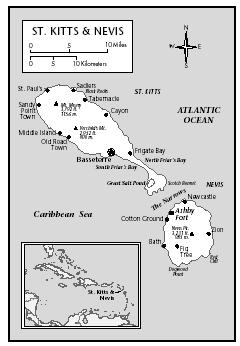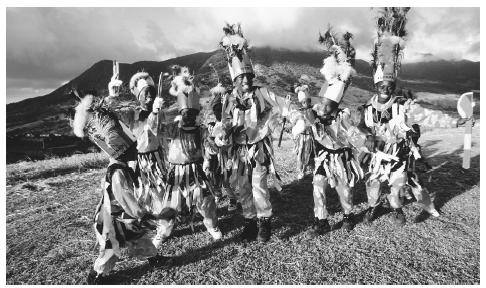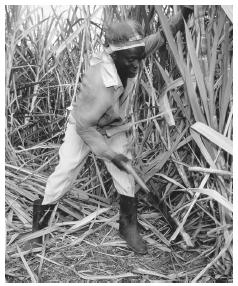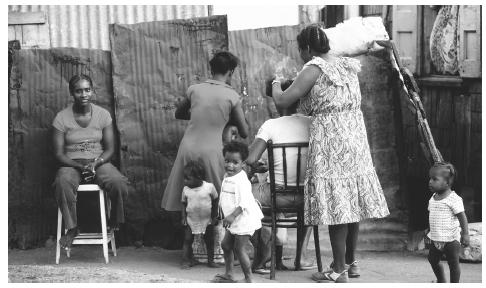Culture of Saint Kitts and Nevis

Culture Name
The inhabitants of the two islands are referred to as Kittitians (or Kitticians) and Nevisians, respectively.
Orientation
Identification. Both islands were discovered by Christopher Columbus on his second voyage to the New World in 1493. Originally, Columbus named the larger island for his patron saint, Saint Christopher, but in the early seventeenth century, British settlers shortened the name to Saint Kitts. Columbus named the smaller neighboring island Nuestra Señora de las Nieves ("Our Lady of the Clouds") because the volcanic mountain in its center usually was encircled by snowlike clouds. When the British arrived, they altered the spelling to Nevis.
Location and Geography. Two miles apart, Saint Kitts and Nevis are in the northern part of the Leeward Islands, approximately two hundred fifty miles (402 kilometers) southeast of Puerto Rico. Saint Kitts, the larger island, is twenty-three miles (thirty-seven kilometers) in its greatest length, with an area of sixty-eight square miles (176.8 square kilometers). Nevis is thirty-six square miles (93.6 square kilometers) in area. Formed by similar mountain-building forces, both islands have dormant volcanoes in their central regions. The capitals Basseterre (Saint Kitts) and Charlestown (Nevis) are ports that are involved in tourism.
Demography. The population has been estimated (1999) to be forty-four thousand, with thirty-five thousand on Saint Kitts and nine thousand on Nevis. However, many more Kittitians and Nevisians live abroad than inhabit the islands. Ninety-five percent of the populace consists of Afro-Caribbeans who are largely descendants of slaves imported to work on sugar plantations, with the remainder made up of descendants of British settlers and early and later migrants.
Linguistic Affiliation. All the inhabitants speak English, and all the Afro-Caribbean residents have access to a local dialect based partly on English and partly on several West African languages. English is the language of business, religion, and tourism and is the medium of instruction in schools. The local dialect, referred to as Kittitian on Saint Kitts and Nevisian on Nevis, is used in the family, at social gatherings, and among men socializing together. It also is employed by Nevisians to communicate with one another without being understood by tourists.
Symbolism. The eclectic nature of contemporary society on Saint Kitts/Nevis and the varied origins of the Afro-Caribbean populace militate against deeply held and widely shared cultural symbols. Both islands have traditional dances, music, garb, and tales, but neither one is committed to a constellation of symbols that could anchor a cultural identity. Instead, the richness and variety of the cultural background is celebrated in a series of festivals. The roots of those festivals go back to the seventeenth century, when they were often associated with Christmas and May Day celebrations. A strong association with Christmas remains, partly because of tradition and partly from the holiday visits of many Kittitians and Nevisians living elsewhere.
History and Ethnic Relations
Emergence of the Nation. The development of political independence was the final link in a process of increasing autonomy for the Afro-Caribbean population of Saint Kitts/Nevis that began in the early nineteenth century. In the eighteenth century, partly because whites feared the slave population, which outnumbered them nearly ten to one, slaves were treated harshly. Although forced to work long hours on sugar plantations, they managed to maintain limited gardens of their own. Some slaves escaped to the mountainous interior, where they set up small holdings and tried to succeed at farming and remain unnoticed. Over the years, former

Saint Kitts and Nevis
slaves established villages in parts of the interior not suitable for plantations. When emancipation began in 1834, there were well-established Afro-Caribbean villages capable of maintaining elements of their traditional culture and developing a complex web of social relations.
Most inhabitants of the islands engaged in basic agriculture and lived very simply. Religion, particularly the Anglican faith, played a major role in education and the formation of concepts of respectability, with an admixture of African traditions centering on mortuary practices and holiday celebrations. By the early twentieth century, the British colonial government provided free basic public education and some amenities. Still, the situation of most islanders remained one of poverty with comparatively little social stratification based on wealth. Members of society who could sustain an elite status generally were connected either to religion or to education, and they maintained some visible material goods, such as a house and furnishings.
In the 1950s, the elimination of sugar and cotton production and an assortment of agricultural problems led to increasing waves of emigration, largely to Great Britain, Commonwealth members, and other English-speaking countries. Emigration resulted in significant changes that were accelerated by political changes in the mid-1960s, when Great Britain established the associated state of Saint Kitts/Nevis, which became fully independent in 1983. Nevisians were unhappy with their connection to the numerically dominant Kittitians and agreed to independence only if they could retain the right to secede and have internal self-rule.
The lengthy economic decline left the islands in an unpromising position. Initial efforts to establish more productive agricultural and other pursuits involving manual labor were stymied by the strong preference of Kittitians and Nevisians for white-collar work. The development of tourism in the 1970s and the increasing ability of emigrants to send funds home have led to better economic circumstances on both islands, which maintain excellent public school systems, resulting in a literacy rate in excess of 90 percent, and good public health programs.
National Identity. The coat of arms appears to owe as much to colonial influence as its does to indigenous traditions.
The contemporary national identity is complex and strongly affected by emigration and the opportunities afforded by education. Emigration in the 1970s reduced the population. That trend seems likely to continue, as current population projections for the years 2000 and 2010 indicate a maintenance of the 1995 figure of thirty-nine thousand. Current estimates suggest that far more inhabitants live abroad than at home, by a factor of four or five to one. Kittitians and Nevisians abroad are employed in a wide range of positions that reflect their education. Nonetheless, they retain strong ties to their homes, visit frequently on holidays, especially on Christmas, and regularly send home money and goods. Family ties are strongly maintained through frequent visits. Many younger islanders look forward to completing their educations abroad and then taking up residence in a foreign country. The result is a complex identity rooted partly in place and tradition and partly in the wider world and educational accomplishment. Emigration makes the achievement of white-collar work ever more possible.
Urbanism, Architecture, and the Use of Space
Basseterre, the largest city on the islands, has eighteen thousand people, while Charlestown has an approximate population of 1,500. Both cities are seats of government and tourism and the major mercantile centers and ports of the islands. Both feature a combination of contemporary architecture mixed with colonial structures. Scattered throughout the islands, there are many fine buildings, often the homes of former plantation owners, some of which have been transformed into inns for tourists.
People usually live in towns and villages ranging from twenty to a few hundred residents in size. The villages often contain a general store and sometimes a post office and are characterized by groupings of houses that reflect kinship connections. Most of these village houses are fairly modest wood frame affairs, and the tropical clime obviates the need for complex insulation and weatherproofing. The largest problem faced by homeowners is the hurricanes that appear late in every summer.
House design usually includes a porch on which the occupants can observe passers by. Socializing occurs easily and frequently at home and in public settings. There is an expectation of and pressure for sociability, and adults try to be accessible. Men generally meet on street corners or frequent small bars, rum shops, and pubs where they can socialize. Women generally confine their interactions to social visits, shopping, and church, though chance encounters are always welcome. Sociability is a distinguishing characteristic of the islands and often is commented on by visitors.
There are good paved road systems totaling seventy-eight miles around each island, though some of the interior roads are either dirt or in poor repair. There are 4,500 automobiles on the islands, and far more people own cars than possess scooters or mopeds. The reason for this pattern seems to be status and the appearance of respectability.
Food and Economy
Food in Daily Life. There are a variety of mixed dishes, including many that betray their off-islands origins, such as spaghetti, but there are also local culinary traditions. In addition to staples such as rice and beans, the islands are known for "goat water," a stew usually made from the neck bones and meat of goats. Accompanying most meals are a range of vegetables, especially squashes and peas, and hot sauces. While fresh fish are available, mutton or goat is the staple meat and is served in a variety of ways ranging from curried to creole style. Fried chicken is also popular, especially for entertaining guests. Beverages range from softdrinks to fruit juices to beer and rum. Of all these purchased drinks, beer is significantly the cheapest, as there is a brewery on Saint Kitts.
Basic Economy. Most coastal families maintain small gardens and a few chickens to round out the menu, but most people living along the more populous coast purchase their needs from general stores, and most of the goods are imported and expensive. Sugar production still accounts for a significant part of the income on Saint Kitts. Both islands produce a range of agricultural products for export, and Nevis has a small stock of cattle, most of which are exported.
The monetary unit is the Eastern Caribbean dollar, which is pegged to the U.S. dollar. The need to import many necessities, including foodstuffs, makes the cost of living high.
Both islands have enterprises that assemble electronics goods for export. In addition, there is significant production of beverages, beer, plastics, and ethanol. The biggest element in the current economy is clearly tourism, which accounts for approximate 53 percent of the national revenue. While locals own and run the great majority of the mercantile enterprises and many popular tourist locales, the largest resorts are owned by off-island concerns, principally American.
Social Stratification
With the exception of moneyed expatriates from America and Great Britain, the inhabitants do not have a significant class structure based on wealth. The major sociocultural concern of most islanders is to appear "respectable," meaning that one manages an acceptable appearance in possessions and in one's person and behaves in socially appropriate ways, as defined largely by cultural patterns originating in British colonial society. While poverty is inimical to respectability, wealth is not essential for it. Material possessions are important, but as demonstrations of respectability rather than of wealth. Education matters greatly; young people are serious about their studies, and good students are praised by adults and respected by their peers.
Political Life
Government. The islands are a constitutional monarchy with a single elected representative

Masquerade dancers on Saint Kitts.
body, the National Assembly. The government is headed by the prime minister, and for administrative purposes, the country is divided into fourteen parishes.
The most singular aspect of the government is that it is bifurcated. While the head of government is in Basseterre, as a condition of union, Nevis demanded internal self-rule. Thus, that island has its own assembly and its own elected premier. The increasing disenchantment of most Nevisians with their treatment by the central government has led to a movement for independence. Although Saint Kitts/Nevis is already the smallest country in the Western Hemisphere, in August 1998, Nevisians voted on secession. The 62 percent of the population that supported secession fell only 4 percent short of the two-thirds required.
Social Problems and Control. The United States and other countries in the Caribbean are concerned that the islands could come under increasing pressure from drug cartels. While there is very little crime against persons or property, in the last ten years there have been increasing problems, especially on Saint Kitts, with drug smugglers who wish to use the islands for transshipment to the United States. Both Saint Kitts and Nevis maintain small police forces that seldom carry arms. Saint Kitts also maintains a coastal watch program in an effort to impede drug smuggling. If the islands become independent of one another, many observers fear that their size would make them vulnerable to outside pressures for illegal activities.
Gender Roles and Statuses
Generally, gender roles owe far more to the pattern of the colonial British then to that of West Africa, with one exception. While the male status has more rights and privileges than the female, especially in the public arena, women have significant rights and, as they approach middle age, may even have authority. Some of the better known and more successful entrepreneurs and political figures are women.
During most of the period before independence, the "respectable" pattern was for men to be the breadwinners and women to tend children at home and confine their social activities to the church and the marketplace. However, many families were matricentric, with the woman and extended kin providing much of the material and affective needs of children. With increased education, women have found new ways to realize their potential and gain public respect.

A man harvesting sugar cane. Most citizens are descendants of the slave labor population.
Marriage, Family, and Kinship
Marriage. Marriage is undertaken as both a social responsibility and a sign of adulthood. The reasons given for marriage emphasize love, though parents pressure children, especially females, who are old enough to marry but are not involved in socializing. Sexual experimentation is reluctantly accepted, and that has resulted in 20 percent of the children on Saint Kitts/Nevis being born out of wedlock.
A newly married couple may reside with either set of parents at first but will prefer to live in their own domicile, though usually close to other relatives. With the high percentage of educated citizens living abroad, there are an increasing number of mixed marriages. However, the kinship ties between off-islanders and residents continue to be strong.
Socialization
Child Rearing and Education. Mothers are differentially involved in child care. Child rearing tends to be mild, with both males and females kept close until boys begin to explore at about school age. Both genders learn appropriate skills and are taught to respect their parents and elders.
Education is valued, and nearly all young people complete primary school. Most then attend secondary school system modeled on that of Great Britain, and a number of the better students obtain scholarships to study in the United States, Great Britain, or other Commonwealth countries.
Etiquette
Etiquette reflects the concept of respectability in which reciprocity and decorum define both inter-personal relations and social acceptability. It is based largely on colonial British models and relaxed only for close friends and family members.
Religion
Some 95 percent of islanders are Protestants, principally Anglican and Methodist, though there are a number of smaller Protestant sects. Religion remains a very important institution in the society and culture. It is a major vehicle for maintaining community solidarity and providing guidelines to and reinforcing the importance of respectable behavior.
While virtually all islanders identity themselves as Christians, many older and some younger islanders believe in obeah , a form of witchcraft in which an individual can be supernaturally harmed by another person for reasons ranging from a perceived wrong to simple envy.
Medicine and Health Care
Saint Kitts and Nevis have good health care with a sufficiency of doctors who are usually British or Canadian trained. There is a hospital on Saint Kitts and an infirmary on Nevis. Pharmaceutical services are widely available.
Secular Celebrations
Held in early August, Culturama is a celebration of traditional Nevisian culture in which music, arts, crafts, and dramatic presentations play dominant roles. It has proven to be a venue though which Nevisians can both expose the young to, and reaffirm pride in their cultural heritage.
The Arts and Humanities
Graphic and Performance Arts. There is a theater group on Saint Kitts and a society of craftspeople. On Nevis, there is a small dramatic society and theater in Charlestown, The Hamilton Arts Center,

Two women cut hair outside a house on Saint Kitts Island.
next to the Alexander Hamilton Museum. There are several reading societies and artists on the island, but little of an organized nature.
Bibliography
Browne, Whitman T. From Commoner to King: Robert L. Bradshaw, Crusader for Dignity and Justice in the Caribbean , 1992.
Hubbard, Vincent K. Swords, Ships, and Sugar: A History of Nevis to 1900 , 1993.
Merrill, Gordon Clark. The Historical Geography of Saint Kitts and Nevis , 1958.
Mills, Frank L., S. B. Jones-Hendrickson, and Bertram Eugene. Christmas Sports in Saint Kitts-Nevis: Our Neglected Cultural Tradition , 1984.
Moll, Verna Penn. St Kitts-Nevis , 1995.
Motley, Constance Baker. Equal Justice under Law: An Autobiography , 1998.
Olwig, Karen Fog. Global Culture, Island Identity: Continuity and Change in the Afro-Caribbean Community of Nevis , 1993.
Richardson, Bonham C. Caribbean Migrants: Environment and Human Survival on Saint Kitts and Nevis , 1983.
